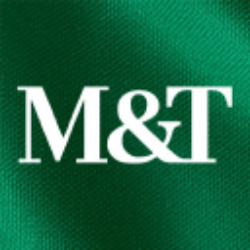HBAN

Huntington Bancshares Incorporated
HBAN
(3.8)16,68 USD
0.89% ROA
8.39% ROE
12.7x PER
21.394.293.900,00 USD
85.31% DER
5.26% Yield
16.31% NPM
Huntington Bancshares Incorporated Stock Analysis
Huntington Bancshares Incorporated Fundamental Analysis
Fundamental analysis in stock investing is like studying the foundation of a house before buying it. It involves looking at a company's financial health, like its earnings, assets, and debts, to determine if it's a good investment based on its fundamental strength and potential for growth.
| # | Analysis | Rating |
|---|---|---|
| 1 |
PBV
With a remarkably low PBV ratio (0.87x), the stock offers substantial upside potential at a bargain price. |
|
| 2 |
Revenue Growth
With continuous growth in revenue over the last five years, this company has proven to be a lucrative investment option, showcasing its strong financial performance. |
|
| 3 |
Assets Growth
Over the past five years, this company's revenue has consistently increased, demonstrating a robust financial performance that makes it an appealing opportunity. |
|
| 4 |
Dividend Growth
Investors can be encouraged by the company's strong dividend growth over the past five years, highlighting its ability to generate consistent returns and provide an attractive investment opportunity. |
|
| 5 |
Dividend
Shareholders can rely on the company's remarkable dividend history, consistently paying dividends for the past five years, demonstrating a steadfast dedication to rewarding investors. |
|
| 6 |
ROE
The stock's ROE falls within an average range (12.76%), demonstrating satisfactory profitability and efficiency in utilizing shareholders' equity. |
|
| 7 |
ROA
The stock's ROA (1.3%) indicates that it's doing well in making money from the things it owns. This makes it a good option to invest and make consistent profits. |
|
| 8 |
DER
The stock has a reasonable amount of debt compared to its ownership (73%), suggesting a balanced financial position and a moderate level of risk. |
|
| 9 |
Graham Number
The company's Graham number indicates that it is undervalued compared to its stock price, suggesting a potentially favorable investment opportunity. |
|
| 10 |
Buffet Intrinsic Value
The company's stock seems undervalued (44) by Warren Buffett's formula, indicating a promising investment opportunity as its intrinsic value exceeds the market price. |
|
| 11 |
Net Profit Growth
Over the past five years, this company's net profit has failed to exhibit any growth, indicating a stagnant financial performance and making it a less favorable choice for potential investors. |
Huntington Bancshares Incorporated Technical Analysis
Technical analysis in stock investing is like reading the patterns on a weather map to predict future weather conditions. It involves studying past stock price movements and trading volumes to make predictions about where a stock's price might go next, without necessarily looking at the company's financial health.
| # | Analysis | Recommendation |
|---|---|---|
| 1 | Awesome Oscillator | Buy |
| 2 | MACD | Buy |
| 3 | RSI | Hold |
| 4 | Stoch RSI | Sell |
Huntington Bancshares Incorporated Price Chart
Financial Statements
Financial statements are like report cards for companies. They show how much money a company makes (income statement), what it owns and owes (balance sheet), and where it spends its money (cash flow statement), helping stock investors understand if a company is healthy and worth investing in.
Income Statements
An income statement for a company is like a scoreboard for its profits and losses. It shows how much money the company made (revenue) and how much it spent to make that money (expenses), helping stock investors see if a company is making a profit or not.
Revenue in stock investing is the total amount of money a company earns from its sales, and it's a key factor that investors consider to assess a company's financial performance and growth potential.
| Year | Revenue | Growth |
|---|---|---|
| 1985 | 0 | |
| 1986 | 0 | 0% |
| 1987 | 0 | 0% |
| 1988 | 0 | 0% |
| 1989 | 528.500.000 | 100% |
| 1990 | 577.500.000 | 8.48% |
| 1991 | 661.200.000 | 12.66% |
| 1992 | 846.400.000 | 21.88% |
| 1993 | 1.102.000.000 | 23.19% |
| 1994 | 991.500.000 | -11.14% |
| 1995 | 973.000.000 | -1.9% |
| 1996 | 1.031.800.000 | 5.7% |
| 1997 | 1.370.000.000 | 24.69% |
| 1998 | 1.459.300.000 | 6.12% |
| 1999 | 1.615.400.000 | 9.66% |
| 2000 | 1.435.991.000 | -12.49% |
| 2001 | 1.505.662.000 | 4.63% |
| 2002 | 1.668.613.000 | 9.77% |
| 2003 | 1.918.139.000 | 13.01% |
| 2004 | 1.729.972.000 | -10.88% |
| 2005 | 1.594.693.000 | -8.48% |
| 2006 | 1.569.469.000 | -1.61% |
| 2007 | 1.978.115.000 | 20.66% |
| 2008 | 2.238.829.000 | 11.65% |
| 2009 | 2.429.931.000 | 7.86% |
| 2010 | 2.660.663.000 | 8.67% |
| 2011 | 2.609.793.000 | -1.95% |
| 2012 | 2.808.381.000 | 7.07% |
| 2013 | 2.702.603.000 | -3.91% |
| 2014 | 2.816.320.000 | 4.04% |
| 2015 | 2.989.467.000 | 5.79% |
| 2016 | 3.519.049.000 | 15.05% |
| 2017 | 4.309.000.000 | 18.33% |
| 2018 | 4.510.000.000 | 4.46% |
| 2019 | 4.667.000.000 | 3.36% |
| 2020 | 4.815.000.000 | 3.07% |
| 2021 | 5.991.000.000 | 19.63% |
| 2022 | 7.254.000.000 | 17.41% |
| 2023 | 7.508.000.000 | 3.38% |
| 2023 | 6.945.000.000 | -8.11% |
| 2024 | 11.836.000.000 | 41.32% |
Research and Development Expenses are the costs a company incurs to create and improve its products or services, which can be important for investors to evaluate a company's innovation and potential for future growth.
| Year | Research and Development Expenses | Growth |
|---|---|---|
| 1985 | 0 | |
| 1986 | 0 | 0% |
| 1987 | 0 | 0% |
| 1988 | 0 | 0% |
| 1989 | 0 | 0% |
| 1990 | 0 | 0% |
| 1991 | 0 | 0% |
| 1992 | 0 | 0% |
| 1993 | 0 | 0% |
| 1994 | 0 | 0% |
| 1995 | 0 | 0% |
| 1996 | 0 | 0% |
| 1997 | 0 | 0% |
| 1998 | 0 | 0% |
| 1999 | 0 | 0% |
| 2000 | 0 | 0% |
| 2001 | 0 | 0% |
| 2002 | 0 | 0% |
| 2003 | 0 | 0% |
| 2004 | 0 | 0% |
| 2005 | 0 | 0% |
| 2006 | 0 | 0% |
| 2007 | 0 | 0% |
| 2008 | 0 | 0% |
| 2009 | 0 | 0% |
| 2010 | 0 | 0% |
| 2011 | 0 | 0% |
| 2012 | 0 | 0% |
| 2013 | 0 | 0% |
| 2014 | 0 | 0% |
| 2015 | 0 | 0% |
| 2016 | 0 | 0% |
| 2017 | 0 | 0% |
| 2018 | 0 | 0% |
| 2019 | 0 | 0% |
| 2020 | 0 | 0% |
| 2021 | 0 | 0% |
| 2022 | 0 | 0% |
| 2023 | 0 | 0% |
| 2023 | 0 | 0% |
| 2024 | 0 | 0% |
General and Administrative Expenses are the costs a company incurs to run its day-to-day operations, such as office rent, salaries, and utilities, which investors consider to understand a company's overall efficiency and management effectiveness.
| Year | General and Administrative Expenses | Growth |
|---|---|---|
| 1985 | 0 | |
| 1986 | 0 | 0% |
| 1987 | 0 | 0% |
| 1988 | 0 | 0% |
| 1989 | 163.500.000 | 100% |
| 1990 | 182.700.000 | 10.51% |
| 1991 | 201.000.000 | 9.1% |
| 1992 | 240.200.000 | 16.32% |
| 1993 | 0 | 0% |
| 1994 | 0 | 0% |
| 1995 | 0 | 0% |
| 1996 | 0 | 0% |
| 1997 | 388.800.000 | 100% |
| 1998 | 428.600.000 | 9.29% |
| 1999 | 419.900.000 | -2.07% |
| 2000 | 421.750.000 | 0.44% |
| 2001 | 478.640.000 | 11.89% |
| 2002 | 440.760.000 | -8.59% |
| 2003 | 447.263.000 | 1.45% |
| 2004 | 485.806.000 | 7.93% |
| 2005 | 481.658.000 | -0.86% |
| 2006 | 605.630.000 | 20.47% |
| 2007 | 729.581.000 | 16.99% |
| 2008 | 858.706.000 | 15.04% |
| 2009 | 897.131.000 | 4.28% |
| 2010 | 933.555.000 | 3.9% |
| 2011 | 990.244.000 | 5.72% |
| 2012 | 1.056.523.000 | 6.27% |
| 2013 | 1.051.798.000 | -0.45% |
| 2014 | 1.097.819.000 | 4.19% |
| 2015 | 1.166.791.000 | 5.91% |
| 2016 | 1.403.231.000 | 16.85% |
| 2017 | 1.602.000.000 | 12.41% |
| 2018 | 1.622.000.000 | 1.23% |
| 2019 | 1.688.000.000 | 3.91% |
| 2020 | 1.724.000.000 | 2.09% |
| 2021 | 2.386.000.000 | 27.75% |
| 2022 | 2.468.000.000 | 3.32% |
| 2023 | 2.588.000.000 | 4.64% |
| 2023 | 2.831.000.000 | 8.58% |
| 2024 | 2.752.000.000 | -2.87% |
EBITDA stands for Earnings Before Interest, Taxes, Depreciation, and Amortization. It is a measure that helps stock investors analyze a company's profitability by looking at its earnings without considering certain expenses. This helps to get a clearer picture of the company's financial performance and its ability to generate cash flow.
| Year | EBITDA | Growth |
|---|---|---|
| 1985 | 52.500.000 | |
| 1986 | 64.700.000 | 18.86% |
| 1987 | 47.800.000 | -35.36% |
| 1988 | 87.600.000 | 45.43% |
| 1989 | 0 | 0% |
| 1990 | 0 | 0% |
| 1991 | 0 | 0% |
| 1992 | 0 | 0% |
| 1993 | 0 | 0% |
| 1994 | 0 | 0% |
| 1995 | 0 | 0% |
| 1996 | 0 | 0% |
| 1997 | 0 | 0% |
| 1998 | 0 | 0% |
| 1999 | 0 | 0% |
| 2000 | 0 | 0% |
| 2001 | 0 | 0% |
| 2002 | 0 | 0% |
| 2003 | 0 | 0% |
| 2004 | 1.028.250.000 | 100% |
| 2005 | 734.910.000 | -39.92% |
| 2006 | 625.710.000 | -17.45% |
| 2007 | 149.904.000 | -317.41% |
| 2008 | -167.966.000 | 189.25% |
| 2009 | -3.450.141.999 | 95.13% |
| 2010 | 412.789.000 | 935.81% |
| 2011 | 989.339.000 | 58.28% |
| 2012 | 1.099.689.000 | 10.03% |
| 2013 | 1.150.301.000 | 4.4% |
| 2014 | 1.185.817.000 | 3% |
| 2015 | 1.254.605.000 | 5.48% |
| 2016 | 1.299.762.000 | 3.47% |
| 2017 | 1.807.000.000 | 28.07% |
| 2018 | 2.121.000.000 | 14.8% |
| 2019 | 2.045.000.000 | -3.72% |
| 2020 | 1.339.000.000 | -52.73% |
| 2021 | 1.982.000.000 | 32.44% |
| 2022 | 3.248.000.000 | 38.98% |
| 2023 | 2.804.000.000 | -15.83% |
| 2023 | 0 | 0% |
| 2024 | -312.000.000 | 100% |
Gross profit is the money a company makes from selling its products or services after subtracting the cost of producing or providing them, and it is an important measure for investors to understand a company's profitability.
| Year | Gross Profit | Growth |
|---|---|---|
| 1985 | 0 | |
| 1986 | 0 | 0% |
| 1987 | 0 | 0% |
| 1988 | 0 | 0% |
| 1989 | 528.500.000 | 100% |
| 1990 | 577.500.000 | 8.48% |
| 1991 | 661.200.000 | 12.66% |
| 1992 | 846.400.000 | 21.88% |
| 1993 | 1.102.000.000 | 23.19% |
| 1994 | 991.500.000 | -11.14% |
| 1995 | 973.000.000 | -1.9% |
| 1996 | 1.031.800.000 | 5.7% |
| 1997 | 1.370.000.000 | 24.69% |
| 1998 | 1.459.300.000 | 6.12% |
| 1999 | 1.615.400.000 | 9.66% |
| 2000 | 1.435.991.000 | -12.49% |
| 2001 | 1.505.662.000 | 4.63% |
| 2002 | 1.668.613.000 | 9.77% |
| 2003 | 1.918.139.000 | 13.01% |
| 2004 | 1.729.972.000 | -10.88% |
| 2005 | 1.594.693.000 | -8.48% |
| 2006 | 1.569.469.000 | -1.61% |
| 2007 | 1.978.115.000 | 20.66% |
| 2008 | 2.238.829.000 | 11.65% |
| 2009 | 2.429.931.000 | 7.86% |
| 2010 | 2.660.663.000 | 8.67% |
| 2011 | 2.609.793.000 | -1.95% |
| 2012 | 2.808.381.000 | 7.07% |
| 2013 | 2.702.603.000 | -3.91% |
| 2014 | 2.816.320.000 | 4.04% |
| 2015 | 2.989.467.000 | 5.79% |
| 2016 | 3.519.049.000 | 15.05% |
| 2017 | 4.309.000.000 | 18.33% |
| 2018 | 4.510.000.000 | 4.46% |
| 2019 | 4.667.000.000 | 3.36% |
| 2020 | 4.815.000.000 | 3.07% |
| 2021 | 5.991.000.000 | 19.63% |
| 2022 | 1.285.000.000 | -366.23% |
| 2023 | 7.508.000.000 | 82.88% |
| 2023 | 6.945.000.000 | -8.11% |
| 2024 | 11.904.000.000 | 41.66% |
Net income in stock investing is like the money a company actually gets to keep as profit after paying all its bills, and it's an important measure to understand how well a company is doing financially.
| Year | Net Profit | Growth |
|---|---|---|
| 1985 | 52.500.000 | |
| 1986 | 64.700.000 | 18.86% |
| 1987 | 47.800.000 | -35.36% |
| 1988 | 87.600.000 | 45.43% |
| 1989 | 108.000.000 | 18.89% |
| 1990 | 85.200.000 | -26.76% |
| 1991 | 117.000.000 | 27.18% |
| 1992 | 139.000.000 | 15.83% |
| 1993 | 236.900.000 | 41.33% |
| 1994 | 242.600.000 | 2.35% |
| 1995 | 244.500.000 | 0.78% |
| 1996 | 262.100.000 | 6.71% |
| 1997 | 292.700.000 | 10.45% |
| 1998 | 301.800.000 | 3.02% |
| 1999 | 422.100.000 | 28.5% |
| 2000 | 328.446.000 | -28.51% |
| 2001 | 178.521.000 | -83.98% |
| 2002 | 363.225.000 | 50.85% |
| 2003 | 372.363.000 | 2.45% |
| 2004 | 398.925.000 | 6.66% |
| 2005 | 412.091.000 | 3.19% |
| 2006 | 461.221.000 | 10.65% |
| 2007 | 75.169.000 | -513.58% |
| 2008 | -113.806.000 | 166.05% |
| 2009 | -3.094.179.000 | 96.32% |
| 2010 | 312.347.000 | 1090.62% |
| 2011 | 542.613.000 | 42.44% |
| 2012 | 641.022.000 | 15.35% |
| 2013 | 638.741.000 | -0.36% |
| 2014 | 632.392.000 | -1% |
| 2015 | 692.957.000 | 8.74% |
| 2016 | 685.122.000 | -1.14% |
| 2017 | 1.186.000.000 | 42.23% |
| 2018 | 1.393.000.000 | 14.86% |
| 2019 | 1.411.000.000 | 1.28% |
| 2020 | 817.000.000 | -72.71% |
| 2021 | 1.295.000.000 | 36.91% |
| 2022 | 2.238.000.000 | 42.14% |
| 2023 | 2.188.000.000 | -2.29% |
| 2023 | 1.951.000.000 | -12.15% |
| 2024 | 1.896.000.000 | -2.9% |
EPS, or earnings per share, is a measure that shows how much profit a company has earned for each outstanding share of its stock, and it is important for stock investors as it helps understand the profitability of a company and compare it with other companies in the market.
| Year | Earning per Share (EPS) | Growth |
|---|---|---|
| 1985 | 0 | |
| 1986 | 1 | 0% |
| 1987 | 0 | 0% |
| 1988 | 1 | 0% |
| 1989 | 1 | 0% |
| 1990 | 1 | 0% |
| 1991 | 1 | 0% |
| 1992 | 1 | 0% |
| 1993 | 1 | 100% |
| 1994 | 1 | 0% |
| 1995 | 1 | 0% |
| 1996 | 1 | 0% |
| 1997 | 1 | 0% |
| 1998 | 1 | 0% |
| 1999 | 2 | 0% |
| 2000 | 1 | 0% |
| 2001 | 1 | 0% |
| 2002 | 1 | 100% |
| 2003 | 2 | 0% |
| 2004 | 2 | 0% |
| 2005 | 2 | 0% |
| 2006 | 2 | 0% |
| 2007 | 0 | 0% |
| 2008 | 0 | 0% |
| 2009 | -6 | 100% |
| 2010 | 0 | 0% |
| 2011 | 1 | 0% |
| 2012 | 1 | 0% |
| 2013 | 1 | 0% |
| 2014 | 1 | 0% |
| 2015 | 1 | 0% |
| 2016 | 1 | 0% |
| 2017 | 1 | 100% |
| 2018 | 1 | 0% |
| 2019 | 1 | 0% |
| 2020 | 1 | 0% |
| 2021 | 1 | 0% |
| 2022 | 1 | 100% |
| 2023 | 1 | 0% |
| 2023 | 1 | 0% |
| 2024 | 1 | 0% |
Cashflow Statements
Cashflow statements show the movement of money in and out of a company, helping stock investors understand how much money a company makes and spends. By examining cashflow statements, investors can assess if a company is generating enough cash to pay its bills, invest in growth, and provide returns to stockholders.
Free cash flow is the leftover cash that a company generates after covering its operating expenses and capital expenditures, which is important for stock investors as it shows how much money a company has available to invest in growth, pay dividends, or reduce debt.
| Year | Free Cashflow | Growth |
|---|---|---|
| 1989 | 60.300.000 | |
| 1990 | 85.800.000 | 29.72% |
| 1991 | -222.100.000 | 138.63% |
| 1992 | 88.700.000 | 350.39% |
| 1993 | 6.200.000 | -1330.65% |
| 1994 | 1.154.100.000 | 99.46% |
| 1995 | 346.500.000 | -233.07% |
| 1996 | 377.700.000 | 8.26% |
| 1997 | 277.800.000 | -35.96% |
| 1998 | 20.400.000 | -1261.76% |
| 1999 | 760.400.000 | 97.32% |
| 2000 | 510.762.000 | -48.88% |
| 2001 | 77.105.000 | -562.42% |
| 2002 | 618.437.000 | 87.53% |
| 2003 | 1.275.903.000 | 51.53% |
| 2004 | 457.019.000 | -179.18% |
| 2005 | 643.336.000 | 28.96% |
| 2006 | 177.252.000 | -262.95% |
| 2007 | -452.229.000 | 139.2% |
| 2008 | 1.177.384.000 | 138.41% |
| 2009 | 1.917.039.000 | 38.58% |
| 2010 | 772.623.000 | -148.12% |
| 2011 | 1.451.024.000 | 46.75% |
| 2012 | 872.489.000 | -66.31% |
| 2013 | 911.037.000 | 4.23% |
| 2014 | 828.978.000 | -9.9% |
| 2015 | 940.265.000 | 11.84% |
| 2016 | 1.094.864.000 | 14.12% |
| 2017 | 1.760.000.000 | 37.79% |
| 2018 | 1.616.000.000 | -8.91% |
| 2019 | 1.467.000.000 | -10.16% |
| 2020 | 1.204.000.000 | -21.84% |
| 2021 | 1.815.000.000 | 33.66% |
| 2022 | 3.813.000.000 | 52.4% |
| 2023 | 976.000.000 | -290.68% |
| 2023 | 2.517.000.000 | 61.22% |
| 2024 | 438.000.000 | -474.66% |
Operating cash flow represents the cash generated or consumed by a company's day-to-day operations, excluding external investing or financing activities, and is crucial for stock investors as it shows how much cash a company is generating from its core business operations.
| Year | Operating Cashflow | Growth |
|---|---|---|
| 1989 | 86.000.000 | |
| 1990 | 134.400.000 | 36.01% |
| 1991 | -196.000.000 | 168.57% |
| 1992 | 108.600.000 | 280.48% |
| 1993 | 63.000.000 | -72.38% |
| 1994 | 1.180.000.000 | 94.66% |
| 1995 | 379.900.000 | -210.61% |
| 1996 | 417.400.000 | 8.98% |
| 1997 | 323.600.000 | -28.99% |
| 1998 | 167.400.000 | -93.31% |
| 1999 | 836.500.000 | 79.99% |
| 2000 | 575.922.000 | -45.25% |
| 2001 | 140.282.000 | -310.55% |
| 2002 | 676.198.000 | 79.25% |
| 2003 | 1.338.406.000 | 49.48% |
| 2004 | 528.216.000 | -153.38% |
| 2005 | 674.699.000 | 21.71% |
| 2006 | 224.459.000 | -200.59% |
| 2007 | -342.779.000 | 165.48% |
| 2008 | 1.237.329.000 | 127.7% |
| 2009 | 1.966.262.000 | 37.07% |
| 2010 | 840.823.000 | -133.85% |
| 2011 | 1.594.787.000 | 47.28% |
| 2012 | 1.002.130.000 | -59.14% |
| 2013 | 1.013.245.000 | 1.1% |
| 2014 | 888.786.000 | -14% |
| 2015 | 1.033.362.000 | 13.99% |
| 2016 | 1.215.302.000 | 14.97% |
| 2017 | 1.954.000.000 | 37.8% |
| 2018 | 1.726.000.000 | -13.21% |
| 2019 | 1.574.000.000 | -9.66% |
| 2020 | 1.323.000.000 | -18.97% |
| 2021 | 2.062.000.000 | 35.84% |
| 2022 | 4.027.000.000 | 48.8% |
| 2023 | 999.000.000 | -303.1% |
| 2023 | 2.657.000.000 | 62.4% |
| 2024 | 480.000.000 | -453.54% |
Capex, short for capital expenditures, refers to the money a company spends on acquiring or upgrading tangible assets like buildings, equipment, or technology, which is important for stock investors as it indicates how much a company is investing in its infrastructure to support future growth and profitability.
| Year | Capital Expenditure | Growth |
|---|---|---|
| 1989 | 25.700.000 | |
| 1990 | 48.600.000 | 47.12% |
| 1991 | 26.100.000 | -86.21% |
| 1992 | 19.900.000 | -31.16% |
| 1993 | 56.800.000 | 64.96% |
| 1994 | 25.900.000 | -119.31% |
| 1995 | 33.400.000 | 22.46% |
| 1996 | 39.700.000 | 15.87% |
| 1997 | 45.800.000 | 13.32% |
| 1998 | 147.000.000 | 68.84% |
| 1999 | 76.100.000 | -93.17% |
| 2000 | 65.160.000 | -16.79% |
| 2001 | 63.177.000 | -3.14% |
| 2002 | 57.761.000 | -9.38% |
| 2003 | 62.503.000 | 7.59% |
| 2004 | 71.197.000 | 12.21% |
| 2005 | 31.363.000 | -127.01% |
| 2006 | 47.207.000 | 33.56% |
| 2007 | 109.450.000 | 56.87% |
| 2008 | 59.945.000 | -82.58% |
| 2009 | 49.223.000 | -21.78% |
| 2010 | 68.200.000 | 27.83% |
| 2011 | 143.763.000 | 52.56% |
| 2012 | 129.641.000 | -10.89% |
| 2013 | 102.208.000 | -26.84% |
| 2014 | 59.808.000 | -70.89% |
| 2015 | 93.097.000 | 35.76% |
| 2016 | 120.438.000 | 22.7% |
| 2017 | 194.000.000 | 37.92% |
| 2018 | 110.000.000 | -76.36% |
| 2019 | 107.000.000 | -2.8% |
| 2020 | 119.000.000 | 10.08% |
| 2021 | 247.000.000 | 51.82% |
| 2022 | 214.000.000 | -15.42% |
| 2023 | 23.000.000 | -830.43% |
| 2023 | 140.000.000 | 83.57% |
| 2024 | 42.000.000 | -233.33% |
Balance Sheet
Balance sheets provide a snapshot of a company's financial health and its assets (such as cash, inventory, and property) and liabilities (like debts and obligations) at a specific point in time. For stock investors, balance sheets help assess the company's overall worth and evaluate its ability to meet financial obligations and support future growth.
Equity refers to the ownership interest or stake that shareholders have in a company, representing their claim on its assets and earnings after all debts and liabilities are paid.
| Year | Equity | Growth |
|---|---|---|
| 1989 | 720.700.000 | |
| 1990 | 785.500.000 | 8.25% |
| 1991 | 853.000.000 | 7.91% |
| 1992 | 941.400.000 | 9.39% |
| 1993 | 1.324.600.000 | 28.93% |
| 1994 | 1.411.800.000 | 6.18% |
| 1995 | 1.518.900.000 | 7.05% |
| 1996 | 1.511.500.000 | -0.49% |
| 1997 | 2.025.400.000 | 25.37% |
| 1998 | 2.148.800.000 | 5.74% |
| 1999 | 2.182.400.000 | 1.54% |
| 2000 | 2.666.047.000 | 18.14% |
| 2001 | 2.716.440.000 | 1.86% |
| 2002 | 2.603.831.000 | -4.32% |
| 2003 | 2.275.002.000 | -14.45% |
| 2004 | 2.537.638.000 | 10.35% |
| 2005 | 2.557.501.000 | 0.78% |
| 2006 | 3.014.326.000 | 15.16% |
| 2007 | 5.949.140.000 | 49.33% |
| 2008 | 7.196.791.000 | 17.34% |
| 2009 | 5.336.002.000 | -34.87% |
| 2010 | 4.980.542.000 | -7.14% |
| 2011 | 5.418.100.000 | 8.08% |
| 2012 | 5.790.211.000 | 6.43% |
| 2013 | 6.099.323.000 | 5.07% |
| 2014 | 6.328.170.000 | 3.62% |
| 2015 | 6.594.606.000 | 4.04% |
| 2016 | 10.281.447.000 | 35.86% |
| 2017 | 10.814.000.000 | 4.92% |
| 2018 | 11.102.000.000 | 2.59% |
| 2019 | 11.795.000.000 | 5.88% |
| 2020 | 12.993.000.000 | 9.22% |
| 2021 | 19.318.000.000 | 32.74% |
| 2022 | 17.769.000.000 | -8.72% |
| 2023 | 18.530.000.000 | 4.11% |
| 2023 | 19.398.000.000 | 4.47% |
| 2024 | 19.563.000.000 | 0.84% |
Assets represent the valuable resources that a company owns, such as cash, inventory, property, and equipment, and understanding a company's assets helps investors assess its value and potential for generating future profits.
| Year | Assets | Growth |
|---|---|---|
| 1989 | 11.679.800.000 | |
| 1990 | 11.808.800.000 | 1.09% |
| 1991 | 12.332.600.000 | 4.25% |
| 1992 | 13.894.900.000 | 11.24% |
| 1993 | 17.618.700.000 | 21.14% |
| 1994 | 17.770.600.000 | 0.85% |
| 1995 | 20.254.600.000 | 12.26% |
| 1996 | 20.851.500.000 | 2.86% |
| 1997 | 26.730.500.000 | 21.99% |
| 1998 | 28.296.300.000 | 5.53% |
| 1999 | 29.037.000.000 | 2.55% |
| 2000 | 28.599.377.000 | -1.53% |
| 2001 | 28.500.159.000 | -0.35% |
| 2002 | 27.578.710.000 | -3.34% |
| 2003 | 30.483.804.000 | 9.53% |
| 2004 | 32.565.497.000 | 6.39% |
| 2005 | 32.764.805.000 | 0.61% |
| 2006 | 35.329.019.000 | 7.26% |
| 2007 | 54.697.468.000 | 35.41% |
| 2008 | 54.311.602.000 | -0.71% |
| 2009 | 51.554.665.000 | -5.35% |
| 2010 | 53.819.642.000 | 4.21% |
| 2011 | 54.450.652.000 | 1.16% |
| 2012 | 56.153.185.000 | 3.03% |
| 2013 | 59.476.344.000 | 5.59% |
| 2014 | 66.298.010.000 | 10.29% |
| 2015 | 71.044.551.000 | 6.68% |
| 2016 | 99.728.985.000 | 28.76% |
| 2017 | 104.185.000.000 | 4.28% |
| 2018 | 108.781.000.000 | 4.23% |
| 2019 | 109.002.000.000 | 0.2% |
| 2020 | 123.038.000.000 | 11.41% |
| 2021 | 174.064.000.000 | 29.31% |
| 2022 | 182.906.000.000 | 4.83% |
| 2023 | 186.650.000.000 | 2.01% |
| 2023 | 189.368.000.000 | 1.44% |
| 2024 | 196.310.000.000 | 3.54% |
Liabilities refer to the financial obligations or debts that a company owes to creditors or external parties, and understanding a company's liabilities is important for investors as it helps assess the company's financial risk and ability to meet its obligations.
| Year | Liabilities | Growth |
|---|---|---|
| 1989 | 10.959.100.000 | |
| 1990 | 11.023.300.000 | 0.58% |
| 1991 | 11.479.600.000 | 3.97% |
| 1992 | 12.953.500.000 | 11.38% |
| 1993 | 16.294.100.000 | 20.5% |
| 1994 | 16.358.800.000 | 0.4% |
| 1995 | 18.735.700.000 | 12.69% |
| 1996 | 19.340.000.000 | 3.12% |
| 1997 | 24.705.100.000 | 21.72% |
| 1998 | 26.147.500.000 | 5.52% |
| 1999 | 26.854.600.000 | 2.63% |
| 2000 | 25.933.330.000 | -3.55% |
| 2001 | 25.783.719.000 | -0.58% |
| 2002 | 24.974.879.000 | -3.24% |
| 2003 | 28.208.802.000 | 11.46% |
| 2004 | 30.027.859.000 | 6.06% |
| 2005 | 30.207.304.000 | 0.59% |
| 2006 | 32.314.693.000 | 6.52% |
| 2007 | 48.748.328.000 | 33.71% |
| 2008 | 47.114.811.000 | -3.47% |
| 2009 | 46.218.663.000 | -1.94% |
| 2010 | 48.839.100.000 | 5.37% |
| 2011 | 49.032.552.000 | 0.39% |
| 2012 | 50.362.974.000 | 2.64% |
| 2013 | 53.377.021.000 | 5.65% |
| 2014 | 59.969.840.000 | 10.99% |
| 2015 | 64.449.945.000 | 6.95% |
| 2016 | 89.447.538.000 | 27.95% |
| 2017 | 93.371.000.000 | 4.2% |
| 2018 | 97.679.000.000 | 4.41% |
| 2019 | 97.207.000.000 | -0.49% |
| 2020 | 110.045.000.000 | 11.67% |
| 2021 | 154.746.000.000 | 28.89% |
| 2022 | 165.137.000.000 | 6.29% |
| 2023 | 168.120.000.000 | 1.77% |
| 2023 | 169.970.000.000 | 1.09% |
| 2024 | 176.747.000.000 | 3.83% |
Huntington Bancshares Incorporated Financial Ratio (TTM)
Valuation Metrics
- Revenue per Share
- 6.52
- Net Income per Share
- 1.16
- Price to Earning Ratio
- 12.7x
- Price To Sales Ratio
- 2.26x
- POCF Ratio
- 7.41
- PFCF Ratio
- 7.84
- Price to Book Ratio
- 1.1
- EV to Sales
- 2.67
- EV Over EBITDA
- 26.45
- EV to Operating CashFlow
- 8.76
- EV to FreeCashFlow
- 9.26
- Earnings Yield
- 0.08
- FreeCashFlow Yield
- 0.13
- Market Cap
- 21,39 Bil.
- Enterprise Value
- 25,26 Bil.
- Graham Number
- 18.73
- Graham NetNet
- -108.41
Income Statement Metrics
- Net Income per Share
- 1.16
- Income Quality
- 1.7
- ROE
- 0.09
- Return On Assets
- 0.01
- Return On Capital Employed
- 0.03
- Net Income per EBT
- 0.83
- EBT Per Ebit
- 0.96
- Ebit per Revenue
- 0.2
- Effective Tax Rate
- 0.15
Margins
- Sales, General, & Administrative to Revenue
- 0.31
- Research & Developement to Revenue
- 0
- Stock Based Compensation to Revenue
- 0.01
- Gross Profit Margin
- 1.05
- Operating Profit Margin
- 0.2
- Pretax Profit Margin
- 0.2
- Net Profit Margin
- 0.16
Dividends
- Dividend Yield
- 0.05
- Dividend Yield %
- 5.26
- Payout Ratio
- 0.62
- Dividend Per Share
- 0.78
Operating Metrics
- Operating Cashflow per Share
- 1.99
- Free CashFlow per Share
- 1.88
- Capex to Operating CashFlow
- 0.05
- Capex to Revenue
- 0.02
- Capex to Depreciation
- 0.19
- Return on Invested Capital
- 0.05
- Return on Tangible Assets
- 0.01
- Days Sales Outstanding
- 282.91
- Days Payables Outstanding
- 0
- Days of Inventory on Hand
- 79049.88
- Receivables Turnover
- 1.29
- Payables Turnover
- 0
- Inventory Turnover
- 0
- Capex per Share
- 0.11
Balance Sheet
- Cash per Share
- 12,58
- Book Value per Share
- 13,48
- Tangible Book Value per Share
- 9.18
- Shareholders Equity per Share
- 13.45
- Interest Debt per Share
- 14.39
- Debt to Equity
- 0.85
- Debt to Assets
- 0.08
- Net Debt to EBITDA
- 4.05
- Current Ratio
- 0.11
- Tangible Asset Value
- 13,33 Bil.
- Net Current Asset Value
- -163,40 Bil.
- Invested Capital
- -97296000000
- Working Capital
- -104,63 Bil.
- Intangibles to Total Assets
- 0.03
- Average Receivables
- 7,29 Bil.
- Average Payables
- 0,00 Bil.
- Average Inventory
- -8550000000
- Debt to Market Cap
- 0.78
Dividends
Dividends in stock investing are like rewards that companies give to their shareholders. They are a portion of the company's profits distributed to investors, typically in the form of cash payments, as a way for them to share in the company's success.
| Year | Dividends | Growth |
|---|---|---|
| 1986 | 0 | |
| 1987 | 1 | 0% |
| 1988 | 1 | 0% |
| 1989 | 1 | 0% |
| 1990 | 1 | 0% |
| 1991 | 1 | 0% |
| 1992 | 1 | 0% |
| 1993 | 1 | 100% |
| 1994 | 1 | 0% |
| 1995 | 1 | 0% |
| 1996 | 1 | 100% |
| 1997 | 1 | 0% |
| 1998 | 1 | 0% |
| 1999 | 1 | 0% |
| 2000 | 1 | 0% |
| 2001 | 1 | 0% |
| 2002 | 1 | 0% |
| 2003 | 1 | 0% |
| 2004 | 1 | 0% |
| 2005 | 1 | 0% |
| 2006 | 1 | 100% |
| 2007 | 1 | 0% |
| 2008 | 1 | 0% |
| 2009 | 0 | 0% |
| 2010 | 0 | 0% |
| 2011 | 0 | 0% |
| 2012 | 0 | 0% |
| 2013 | 0 | 0% |
| 2014 | 0 | 0% |
| 2015 | 0 | 0% |
| 2016 | 0 | 0% |
| 2017 | 0 | 0% |
| 2018 | 1 | 0% |
| 2019 | 1 | 0% |
| 2020 | 1 | 0% |
| 2021 | 1 | 0% |
| 2022 | 1 | 0% |
| 2023 | 1 | 0% |
| 2024 | 0 | 0% |
Huntington Bancshares Incorporated Profile
About Huntington Bancshares Incorporated
Huntington Bancshares Incorporated operates as the bank holding company for The Huntington National Bank that provides commercial, consumer, and mortgage banking services in the United States. The company operates through four segments: Consumer and Business Banking; Commercial Banking; Vehicle Finance; and Regional Banking and The Huntington Private Client Group (RBHPCG). The Consumer and Business Banking segment offers financial products and services, such as checking accounts, savings accounts, money market accounts, certificates of deposit, credit cards, and consumer and small business loans, as well as investment products. This segment also provides mortgages, insurance, interest rate risk protection, foreign exchange, automated teller machine, and treasury management services, as well as online, mobile, and telephone banking services. It serves consumer and small business customers. The Commercial Banking segment offers regional commercial banking solutions for middle market businesses, government and public sector entities, and commercial real estate developers/REITs; and specialty banking solutions for healthcare, technology and telecommunications, franchise finance, sponsor finance, and global services industries. It also provides asset finance services; capital raising solutions, sales and trading, and corporate risk management products; institutional banking services; and treasury management services. The Vehicle Finance segment provides financing to consumers for the purchase of automobiles, light-duty trucks, recreational vehicles, and marine craft at franchised and other select dealerships, as well as to franchised dealerships for the acquisition of new and used inventory. The RBHPCG segment offers private banking, wealth and investment management, and retirement plan services. As of March 18, 2022, the company had approximately 1,000 branches in 11 states. Huntington Bancshares Incorporated was founded in 1866 and is headquartered in Columbus, Ohio.
- CEO
- Mr. Stephen D. Steinour
- Employee
- 19.896
- Address
-
Huntington Center
Columbus, 43287
Huntington Bancshares Incorporated Executives & BODs
| # | Name | Age |
|---|---|---|
| 1 |
Mr. Brantley J. Standridge Senior EVice President and President of Consumer & Business Banking |
70 |
| 2 |
Mr. Timothy W. Miller Executive Vice President & Chief Communications Officer |
70 |
| 3 |
Ms. Marcy C. Hingst Senior EVice President & General Counsel |
70 |
| 4 |
Mr. Timothy R. Sedabres Executive Vice President & Head of Investor Relations |
70 |
| 5 |
Ms. Sarah Pohmer Senior EVice President & Chief Human Resources Officer |
70 |
| 6 |
Mr. Stephen D. Steinour Chairman, President & Chief Executive Officer |
70 |
| 7 |
Mr. Zachary J. Wasserman Chief Financial Officer & Senior EVice President |
70 |
| 8 |
Mr. Scott D. Kleinman Senior Executive Vice President & President of Commercial Banking |
70 |
| 9 |
Ms. Nancy E. Maloney Executive Vice President, Controller & Principal Accounting Officer |
70 |
| 10 |
Mr. Kendall Kowalski Executive Vice President & Chief Information Officer |
70 |












